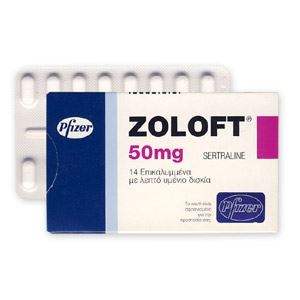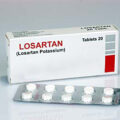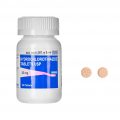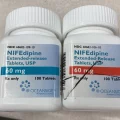
What is Zoloft?
Zoloft (Sertraline) belongs to a class of antidepressants called selective serotonin reuptake inhibitors (SSRIs). It works by increasing the amounts of serotonin, a natural substance in the brain that helps maintain mental balance.
Sertraline is used to treat depression, obsessive-compulsive disorder (bothersome thoughts that won’t go away and the need to perform certain actions over and over), panic attacks (sudden, unexpected attacks of extreme fear and worry about these attacks), post-traumatic stress disorder (disturbing psychological symptoms that develop after a frightening experience), and social anxiety disorder (extreme fear of interacting with others or performing in front of others that interferes with normal life). It is also used to relieve the symptoms of premenstrual dysphoric disorder, including mood swings, irritability, bloating, and breast tenderness.
How should Zoloft be used?
Sertraline comes as a tablet and a concentrate (liquid) to take by mouth. It is usually taken once daily in the morning or evening. To treat premenstrual dysphoric disorder, sertraline is taken once a day, either every day of the month or on certain days of the month.
The recommended initial dosage and maximum Zoloft dosage in patients with MDD, OCD, PD, PTSD, and SAD are displayed in the Table below. A dosage of 25 mg or 50 mg per day is the initial therapeutic dosage.
For adults and pediatric patients, subsequent dosages may be increased in case of an inadequate response in 25 to 50 mg per day increments once a week, depending on tolerability, up to a maximum of 200 mg per day. Given the 24-hour elimination half-life of Zoloft, the recommended interval between dose changes is one week.
| Recommended Daily Dosage of ZOLOFT in Patients with MDD, OCD, PD, PTSD, and SAD | ||
| Indication | Starting Dose | Therapeutic Range |
| Adults | ||
| MDD | 50 mg | 50–200 mg |
| OCD | 50 mg | |
| PD, PTSD, SAD | 25 mg | |
| Pediatric Patients | ||
| OCD (ages 6–12 years old) | 25 mg | 50–200 mg |
| OCD (ages 13–17 years old) | 50 mg | |
Take Zoloft at around the same time every day. Follow the directions on your prescription label carefully, and ask your doctor or pharmacist to explain any part you do not understand. Take Zoloft exactly as directed. Do not take more or less of it or take it more often than prescribed by your doctor. Also Read: How Long Does It Take For Zoloft (Sertraline) To Work
What To Do If You Accidentally Took 300 Mg Zoloft
The most common signs and symptoms associated with non-fatal ZOLOFT overdosage are somnolence, vomiting, tachycardia, nausea, dizziness, agitation and tremor. In case of overdose, call the poison control helpline if the victim has collapsed, had a seizure, has trouble breathing, or can’t be awakened, immediately call emergency services for emergency medical help. Read: How Long Do Muscle Relaxers Stay In Your System
What side effects can this medication cause?
Sertraline may cause side effects. Tell your doctor if any of these symptoms are severe or do not go away:
- nausea
- diarrhea
- constipation
- vomiting
- difficulty falling asleep or staying asleep
- dry mouth
- heartburn
- loss of appetite
- weight changes
- dizziness
- excessive tiredness
- headache
- nervousness
- uncontrollable shaking of a part of the body
- changes in sex drive or ability
- excessive sweating
Some side effects can be serious. If you experience any of the following symptoms , call your doctor immediately:
- seizures
- abnormal bleeding or bruising
- agitation, hallucinations, fever, sweating, confusion, fast heartbeat, shivering, severe muscle stiffness or twitching, loss of coordination, nausea, vomiting, or diarrhea
- headache, weakness, unsteadiness, confusion, or memory problems
- rash
- hives
- swelling
- difficulty breathing
Sertraline may decrease appetite and cause weight loss in children. Your child’s doctor will watch his or her growth carefully. Talk to your child’s doctor if you have concerns about your child’s growth or weight while he or she is taking this medication. Talk to your child’s doctor about the risks of giving sertraline to your child.
Sertraline may cause other side effects. Call your doctor if you have any unusual problems while taking this medication. Read: 10 Differences and Similarities Between Zoloft vs Xanax




